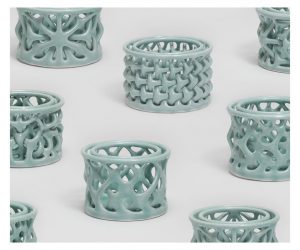Veronica Project 01 Face
//Veronica Wang
//Section B
//yiruiw@andrew.cmu.edu
//Project 01 Face
function setup() {
createCanvas(600, 600);
background(255,177,190);
}
function draw() {
//hair
noStroke();
fill(161,129,83);
ellipse(300, 250, 250, 250);
rect(175, 200, 250, 250, 50);
noStroke();
fill(134,107,68);
ellipse(300, 250, 240, 240);
noStroke();
fill(161,129,83);
ellipse(310, 260, 250, 250);
//face
noStroke();
fill(255,236,190);
ellipse(300, 300, 200, 220);
rect(275,375,50,70);
ellipse(210,300,50,50);
//hair
noStroke();
fill(161,129,83);
ellipse(280, 210, 160, 100);
ellipse(365, 210, 80, 80);
rect(200,200,20,200,10);
//earing
noStroke();
fill('white');
ellipse(190,310,10,10);
//eyebrows
noStroke();
fill(161,129,83);
ellipse(270, 270, 70, 15);
ellipse(365, 270, 50, 15);
noStroke();
fill(255,236,190);
ellipse(270, 275, 80, 15);
ellipse(365, 275, 60, 15);
//eyes
noStroke();
fill(161,129,83);
ellipse(270, 305, 50, 50);
ellipse(365, 305, 50, 50);
noStroke();
fill(255,236,190);
ellipse(270, 315, 60, 60);
ellipse(365, 315, 60, 60);
line()
//shirt
noStroke();
fill(170);
ellipse(300, 625, 400, 400);
noStroke();
fill(180);
ellipse(300, 635, 400, 400);
noStroke();
fill(255,177,190);
ellipse(300, 625, 300, 300);
noStroke();
fill(180);
rect(180, 475, 240, 250);
noStroke();
fill(170);
rect(180, 533, 10, 70);
//mouth
noStroke();
fill(255,139,139);
arc(300, 365, 45, 45, 0, PI + QUARTER_PI, OPEN);
//nose
noStroke();
fill(229,217,163);
arc(320, 330, 20, 20, -45,QUARTER_PI+QUARTER_PI, OPEN);
//neck
noStroke();
fill(255,236,190);
ellipse(300,447,100,50);
}
I started by sketching out the face I wanted to draw in simple shapes, and then tried to put them into javascript. I don’t have much coding background and was struggling to create curves, so I used overlapping ellipses to draw curved eyebrows/eyes. I’m sure there are smarter ways to do this but I still had a lot of fun doing this exercise!


![[OLD FALL 2018] 15-104 • Introduction to Computing for Creative Practice](https://courses.ideate.cmu.edu/15-104/f2018/wp-content/uploads/2020/08/stop-banner.png)
